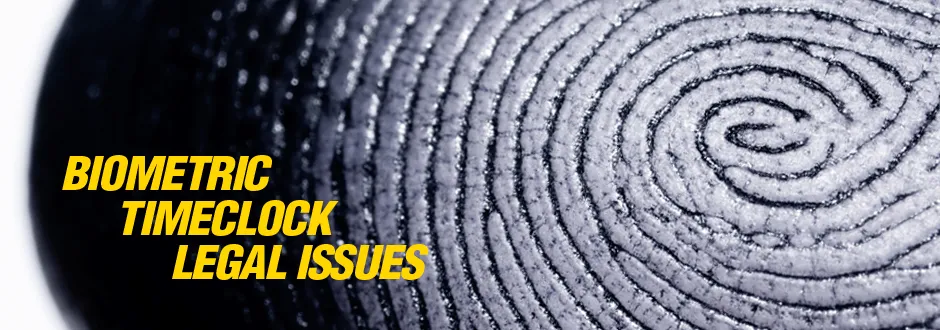
For decades, businesses have used
time clocks to track the hours that their employees work. Traditional systems have included manually recording arrival and departure times and using punch cards or computers to clock in and out, but biometrics are coming to the forefront methods of tracking time and attendance. While they have numerous potential advantages over lower-tech methods, the introduction of
biometric systems also raises some legal concerns.
Introduction to Biometrics for Time and Attendance
Biometric data are based on characteristics of the body of an individual. They can include direct images, such as a fingerprint or photo of the face, or encrypted data, which are generated from particular characteristics. Software and hardware recognition of an employee’s voice, fingerprint, iris, and face when the employee arrives at work or gains access to a secured area are examples of the use of biometrics in the workplace.
Potential Benefits to Employers and Employees
A significant potential benefit of the use of biometrics over punch cards is a decrease in fraud related to time worked. With punch cards, “buddy punching” can be rampant; one’s coworker can simply scan one’s card to clock in and thus cheat the employer. Biometrics makes buddy punching impossible; the employee must be present to clock in. The employer also gains because of better workplace security due to more stringent control over who gains access to the work area.
Biometrics can benefit employees by reducing the amount of uncompensated hours that are worked. Furthermore, biometrics time clocks can be more convenient because there is no need to carry a key or card or fumble for one in a purse or pocket.
Legal Questions Raised
However, the discussion of biometric time clock legal issues raise several concerns. One is whether the practice is legal. Fingerprint recognition is a standard method of identifying employees for recording time and attendance, but employers may not take employees’ fingerprints in the state of New York unless they are required as part of a background check. Another concern is the ability of employers to fire employees for their refusal to undergo biometric analysis, since this right is not expressly protected by current labor laws.
Privacy Concerns Related to the Use of Biometrics Time Clocks
Employees may express privacy concerns as arguments against the use of biometrics. Since biometrics involves measuring and recording body characteristics, it can uncover employee health conditions that the employee did not want to disclose. For example, certain changes to the iris are indicative of diabetes. Another issue can arise when individuals of certain religious beliefs refuse to have their photos taken as part of the company’s shift to a biometrics system.
Potential for Lack of Full Disclosure
Employees may feel a lack of confidence regarding limits on the use of their biometric data. The fear of lack of transparency may be greater among government workers, whose concern might be that their biometric identification data are being used not only at their work sites, but also at other government agencies to aid in identification and tracking of private activities. A comprehensive policy with full disclosure is essential to calming employee fears.
Solutions
A
biometrics system might be more widely accepted when it is used not only to monitor employee attendance, but also to increase workplace security by limiting access to secured areas of the site. These tips can help your company implement better
biometrics time clocks and related policies.
- Inform employees in advance of the shift to biometrics and why it is necessary.
- Detail your policies regarding rounding, tardiness, and overtime. These can be programmed into the software program that you are using.
- Let your employees know that you are not storing any retrievable information.
- Explain how you will protect employer safety; for example, some employees might erroneously fear radiation exposure from a fingerprint recognition system.
- Prepare alternative systems for individuals who may have religious objections.
Sources provided –
law.onecle.com/new-york/labor/LAB0201-A_201-A.html
laborlawyers.com/using-biometrics-in-the-workplace
workforce.com/articles/employers-turn-to-biometric-technology-to-track-attendance
 For decades, businesses have used
For decades, businesses have used